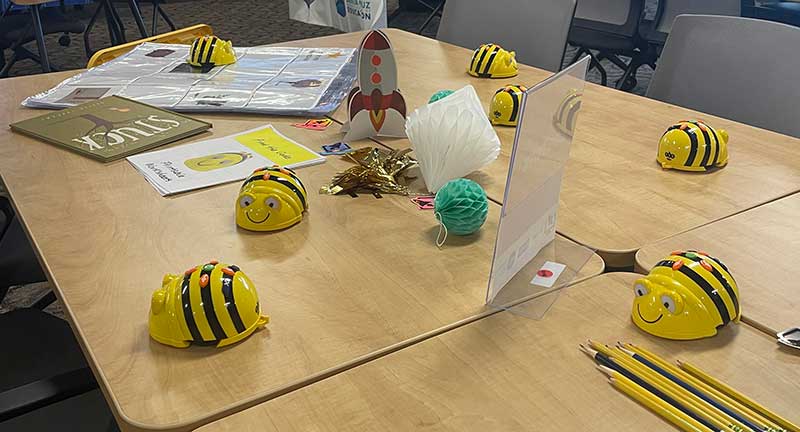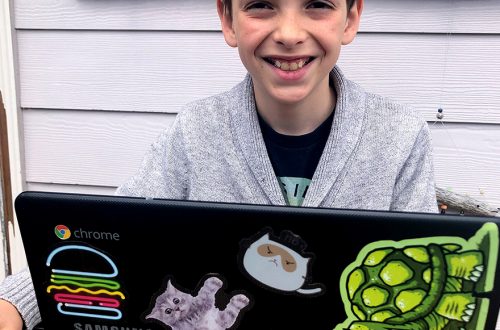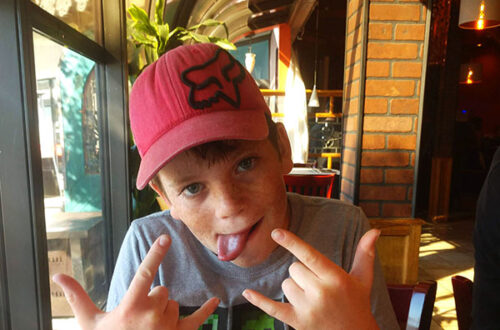Students across Santa Cruz county will be learning computer technology from the most unlikely of teachers – robotic bees and artificial intelligence toy cars.
As computer technology becomes more of a necessary skill in the classroom, teachers throughout Santa Cruz county are finding unique methods of teaching these skills at a young age.
Dozens of educators and industry partners from across Santa Cruz county gathered on Thursday, Sept. 14 at the Santa Cruz Office of Education to discuss new exciting methods of teaching students computer technology.
Many of those attending are members of the CSTA – Computer Science Teachers Association – who strive to encourage and assist the rapidly modernizing field of computer science.
Just like many others in the room, Stephanie Sumarna (a former third grade teacher herself) works with the Santa Cruz County Office of Education.
She acts as a distance learning TOSA – Teacher On Special Assignment – with the objective of teaching the fundamental principles of computer science to impoverished regions of Santa Cruz county.
“The idea is that we want to make computer science accessible to all students in our county,” said Sumarna. “We want to eliminate the barriers.”
At the beginning of the K-12 education spectrum, Bee Bots give building blocks for more advanced levels of computational thinking for kids ranging from Kindergarten to Second Grade. It’s the starting hive toward mastering computer skills.
The way her Bee Bots work is with buttons at the top that move the robot six inches in either direction that allow the kids to tackle the concept of cause and effect in controlling computer technology.
Early-aged technology activities including Bee Bots are designed to enhance social and emotional learning skills, which is the biggest difference that Sumarna sees in the students that use them.
“One of the skills I always tried to get my students to do was how to work together and share the load when solving problems,” she said. “I think computer science has students doing that naturally.”
One step more advanced than the Bee Bots is Luma – a programmable robot designed for grades 4-6.
Much like the Bee Bot, Luma also builds student collaboration and identification of problems while building upon elementary tools for coding.
C.J. Runyon works for Pitsco education to build student’s strength in STEM, and allows kids to have invaluable hands-on experience working with robotics.
“You have some students who’ve had exposure, and others who haven’t,” said Runyon. “One of my goals is to get teachers more comfortable using coding because they have a lot on their plate.”
The room full of county educators walked across the street for a tour of Joby Aviation.
With some of the greatest engineers and computer scientists in the country working for them, Joby designers were hard at work creating drones whose mission it is for them to save a billion people one hour every day as the Uber of the sky.
Many schools send their students to similar tours to witness the limitless possibilities.
Jack Michael, who helps establish career pathways for K-12 students through the Santa Cruz County Office of Education, believes students should pursue the field of computer science “Because it’s interesting now as a teenager and there are a lot of opportunities for good paying jobs down the road.”
Michael helps students receive financial aid, as well as funding school technology services such as Robotics Clubs in which students get to work together and expand upon their curiosity for computer technology.
Teaching students the basics of this technology through simplified games will form an early understanding of computational thinking – which expands into more complex coding such as Python and C++ as they enter high school and college level courses.
Chris Miller, CEO of a local software developing company, works with the County Office of Education for a pilot program that teaches artificial intelligence to K-12 students by programming a toy car to drive itself.
“It’s an easy and approachable way for kids to get into computer science and artificial intelligence through gamification,” said Miller.
This is done after school through a virtual program that allows students to utilize Python coding to train a computer model.
In a world where AI is becoming more prevalent in the lives of many for functions that oppose creative learning, these skills become increasingly important.
While technology will continue to improve and methods of teaching along with it – educators across Santa Cruz county will find ways to ensure every student has access to learning skills of computer technology – one bee bot at a time.
By Quinn Southall








